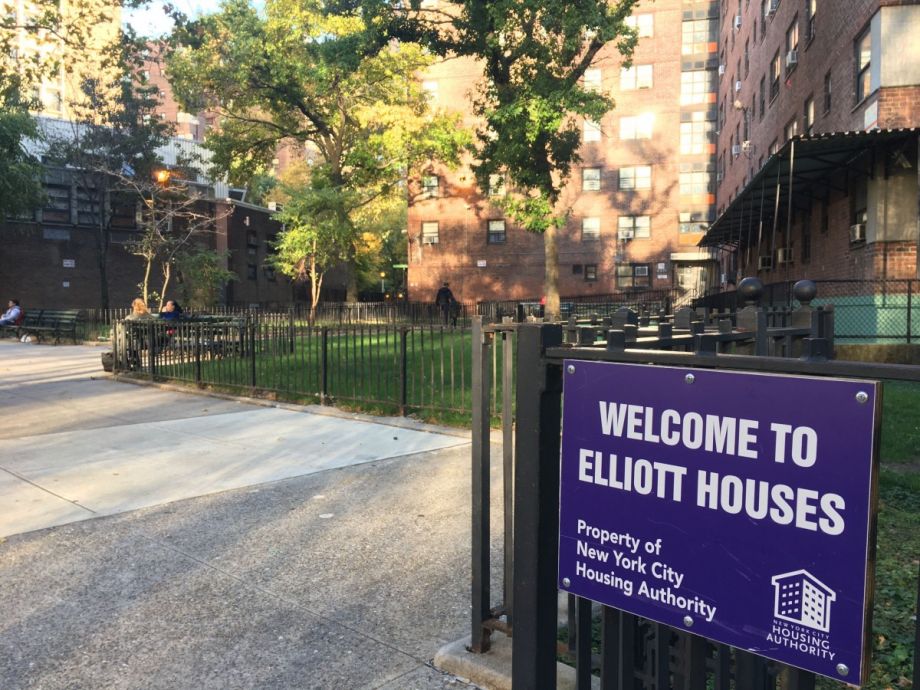If the public housing system in New York City was its own city, it would be larger than New Orleans, with 400,000 residents paying an average of $522 per month for an apartment. It’s a critical lifeline for low-income people, whose options for finding affordable housing in New York are increasingly vanishing. And without an immediate and sustained commitment to rehabilitate its 326 housing complexes, according to a new report from the Regional Plan Association (RPA), the system could all but collapse.
The report, called “Time to Act: Restoring the Promise of NYC’s Public Housing,” builds on previous research showing that NYCHA properties are in need of $45.2 billion in repairs over the next 20 years in order to remain habitable. Today, the report says, conditions in public-housing units in New York “range from the unacceptable to the deplorable.” Failing to keep up with repairs adds millions to the overall rehabilitation cost, and puts the buildings in danger of becoming uninhabitable. “If we do not act now, we will find ourselves quickly facing a massive situation of demolition by neglect,” the report says.
Moses Gates, the vice president for housing and neighborhood planning at the Regional Plan Association and lead author of the report, notes that there has been a lot of research describing NYCHA’s needs — including another report released by the RPA last December called “NYCHA’s Crisis.”
“There’s a decent amount of information out there to work with,” Gates says. “What we were trying to do was not just focus on how we got here and whose fault it is and what the problems are, but to focus on something going forward.”
The report includes 10 recommendations for how New York can address the crisis, and the first is to form “a new civic coalition for NYCHA.” The deterioration of public housing in New York is “a source of shame for us all,” the report notes. And it’s not just NYCHA residents that have a stake in public housing, but their employers, religious communities, banks, and the businesses where they spend their money, the report says. Civic institutions like those should come together and possibly create “an independent oversight and advocacy organization,” according to the report. The report cites initiatives like the Straphangers Campaign, which acts as a check on the city’s public-transit system.
“When we have a real crisis in New York, the civic sector bands together,” Gates says. “You saw it in the 1970s with the fiscal crisis, and what we’re saying is, the crisis in NYCHA is at that level … Everybody needs to give something, whether that’s advocacy, whether that’s funding, or whether that’s working in a little bit less self-interested manner and more of a civic manner.”
The report also calls for public housing, which has traditionally operated outside of New York City’s municipal operations, to become the focus of the city’s housing efforts, with goals for rehabilitation and preservation that can be tracked over time. The Department of Housing Preservation and Development and the New York Housing Development Corporation are adept at finding ways to finance deals that preserve affordable housing, and those skills should be put to use for public housing projects, the report says, even if it comes at the expense of the city’s other housing goals.
“The biggest thing that can happen that would help is for HPD and HDC to take charge of coming up with a real plan to finance the rehabilitation of the whole portfolio,” Gates says.
The report also suggests that the Authority could consider de-consolidating its operations and creating more localized property-management arms — NYCHA is by far the biggest landlord in New York — to be more responsive to repair and maintenance issues. Earlier this year, NYCHA hired a new CEO, Gregory Russ, who used to lead the Minneapolis Public Housing Authority. (Next City requested an interview with Russ over a period of several weeks in August, until NYCHA’s communications office stopped responding.) Other recommendations in the report include bringing independent voices to the Authority’s board of directors, while keeping the board under mayoral control.
Some of the money for necessary rehab projects could be generated by expanding the ways that NYCHA can transfer development rights to other builders, the report notes. Transfer of Development Rights (TDR) is a way for owners of some buildings, often historically protected ones, to sell the unused space on their property to other owners without actually building anything additional onsite. Zoning may allow for a 10-story building on a site that only has a three-story building, for example, and in some cases owners can sell the excess zoning permission to others. A recent deal in Brooklyn saw NYCHA selling more than 90,000 square feet of buildable space to a private developer in return for $25 million in repair work on existing public-housing projects, as Curbed reported. More money could be raised by allowing NYCHA projects more leeway to sell those rights, such as by extending the radius in which development rights can be sold to a half-mile, the RPA report says.
The report also explores the possibility of creating a “pied-a-terre tax,” which would generate revenue from apartments that are occupied less than half the year. The idea was on state lawmakers’ agenda earlier this year, and reportedly will be considered again.
Gates says the seeds of a coalition that could bring the needed focus to NYCHA’s portfolio is already in place, with the alliances of affordable-housing developers and tenants’ rights groups that were influential in the creation of new laws in New York and Albany this year. He hopes the report and others like it will draw attention to the issue from a larger set of institutions.
“A big part of it is trying to galvanize a lot of civic will around this,” Gates says. “We’re hoping to install a sense of urgency, and we’re hoping to really solidify the understanding among folks in New York City about the importance of public housing and public-housing residents to the life of this city.”
EDITOR’S NOTE: This article has been updated to correct the name of the Regional Plan Association.
This article is part of Backyard, a newsletter exploring scalable solutions to make housing fairer, more affordable and more environmentally sustainable. Subscribe to our weekly Backyard newsletter.

Jared Brey is Next City's housing correspondent, based in Philadelphia. He is a former staff writer at Philadelphia magazine and PlanPhilly, and his work has appeared in Columbia Journalism Review, Landscape Architecture Magazine, U.S. News & World Report, Philadelphia Weekly, and other publications.
Follow Jared .(JavaScript must be enabled to view this email address)


















